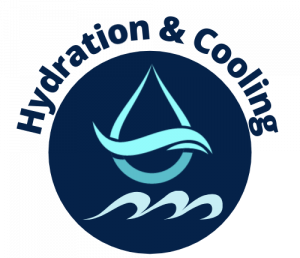Discover proper ergonomic lifting techniques for field tarps. Our guide helps athletic staff prevent back injuries and safely manage heavy field coverings.
_______________________________
Preventing Back Injuries During Tarp Deployment: Proper Lifting Techniques
Field tarps are essential for protecting athletic playing surfaces, but their weight and awkward handling can lead to serious back injuries when deployed incorrectly. At Hydration and Cooling, we understand the challenges athletic staff face when managing heavy field coverings. This guide shares professional ergonomic techniques that reduce injury risk while efficiently protecting your fields. When temperatures rise and sudden weather changes threaten your playing surface, knowing how to safely handle these heavy covers becomes just as important as having the right equipment on hand.
Why Proper Tarp Lifting Techniques Matter
A typical baseball field tarp can weigh between 800-1,500 pounds when dry and significantly more when wet. Improper lifting doesn’t just risk immediate injury; it can lead to chronic back problems that sideline staff for entire seasons. The National Safety Council reports that back injuries account for nearly 20% of all workplace injuries, with improper lifting being the primary cause. For athletic programs, having key staff members injured can disrupt operations during critical game days when weather conditions change rapidly.
The right approach to tarp deployment combines team coordination, proper body positioning, and smart use of mechanical assistance when available. This isn’t just about safety—it’s about maintaining operational efficiency when every minute counts during weather delays.
Core Ergonomic Principles for Tarp Handling
Pre-Deployment Planning
Before you even touch the tarp, proper preparation sets the stage for safe handling:
Assess the weight and dimensions of your specific tarp. Different fields require different covers, and knowing exactly what you’re working with helps determine how many people you’ll need. Check weather conditions—wet tarps require more handlers than dry ones. Communicate the deployment plan clearly to all team members, including designated leaders who will call commands for synchronized movement.
Ensure all handlers wear appropriate footwear with proper traction, especially crucial when working on potentially wet surfaces where slips can cause back injuries even before lifting begins.
Proper Body Mechanics During Lifting
The moment of lifting presents the highest injury risk. Follow these specific techniques:
Stand with feet shoulder-width apart to create a stable base. When gripping the tarp, bend at the knees rather than the waist, keeping your back straight throughout the movement. Tighten your core muscles just before lifting to provide natural back support. Grip the tarp firmly with both hands, keeping it close to your body as you lift.
Most importantly, use your leg muscles to power the lift, not your back. This means pushing through your heels and extending your knees while maintaining your straight back position. Never twist while lifting—if you need to change direction, move your feet to reposition your entire body.
Team Coordination Techniques
The key to safe tarp deployment is working as a synchronized unit:
Use clear, consistent verbal commands that all team members understand. Designate specific roles—edge handlers, middle supporters, and a coordinator who can see the entire operation. Practice deployment regularly with your team so movements become second nature, reducing hesitation that can lead to strain injuries.
When deploying or removing tarps during actual weather events, maintain consistent spacing between handlers to distribute weight evenly. This prevents any single person from suddenly bearing too much of the load.
Using Hydration Breaks to Prevent Fatigue-Related Injuries
Tarp deployment often happens during hot weather or high-pressure situations when storms approach. Fatigue significantly increases injury risk, making proper hydration essential:
Keep hydration stations positioned near field access points for quick water breaks during extended tarp sessions. Our Team Water Tankers provide quick hydration for multiple staff members simultaneously, reducing downtime while ensuring everyone stays properly hydrated. Remember that dehydration affects judgment and muscle function, two critical factors in preventing back injuries.
For particularly hot conditions, our Outdoor Misting Fans can help cool staff between deployment efforts, reducing heat stress that contributes to muscle fatigue and increased injury risk.
Mechanical Assistance and Smart Alternatives
While traditional manual deployment remains common, consider these alternatives:
Tarp deployment systems with wheels can significantly reduce lifting strain. For smaller applications, lightweight tarps with handles distribute weight more effectively. Motorized deployment systems, while requiring initial investment, dramatically reduce injury risk for programs that frequently deal with weather delays.
If budget constraints prevent mechanical options, focus on increasing your team size to reduce individual load—the cost of additional helpers is far less than the cost of staff injuries.
Ready to Protect Your Team and Your Fields?
At Hydration and Cooling, we’re committed to keeping your staff safe and your fields protected. Our team hydration solutions ensure your grounds crew stays properly hydrated during intense tarp deployments, reducing fatigue-related injury risk.
Call us at 828-820-8600 to discuss how our portable hydration stations can support your grounds maintenance team during critical weather situations. When life gets hot, we do cool—and we help keep your team safe while they protect your valuable playing surfaces.
Questions about incorporating proper hydration into your field maintenance protocol? Our team is ready to help with practical solutions designed specifically for athletic programs.
